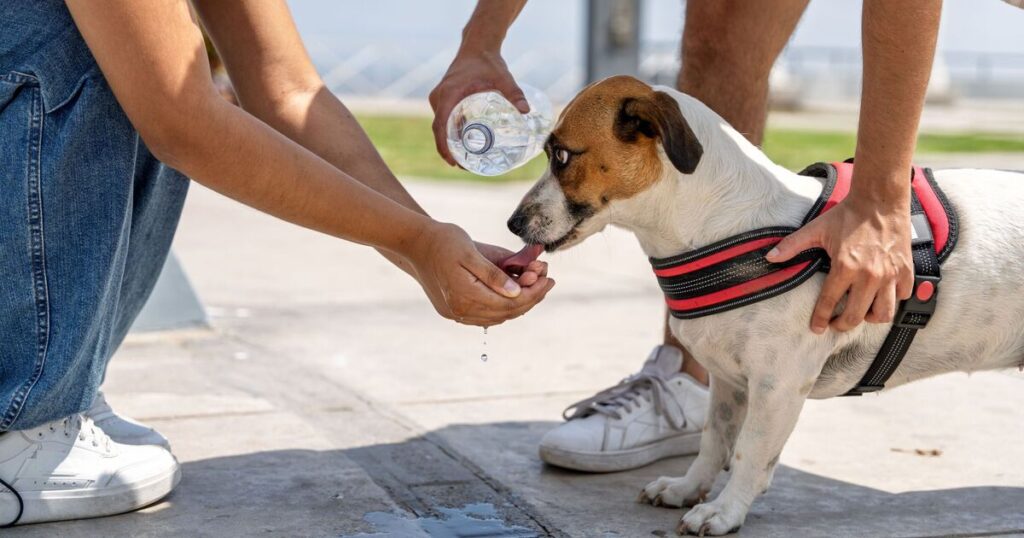
It is important to understand that dogs do not sweat in the same way as humans. The main way they can cool themselves down is through panting,but when temperatures outside have risen so high that it matches their body temperature, panting can become ineffective – leading to heat stroke.
Certain breeds can be particularly sensitive to the heat, with flat-nosed breeds such as pugs or bulldogs struggling to take in enough air.
In the heat, dogs will sweat, but it will come from their paws so when taking them out for a walk it’s crucial to make sure the ground isn’t too hot.
Pet experts at Insure Your Paws have warned that a simple five-second test can be crucial in judging if it’s too hot for your pooch.
The experts revealed: “Avoid exercising your dog at the hottest time of the day. Mornings and evenings tend to be cooler times to go for a walk, and the ‘5-second rule’ is crucial to ensure their paw pads do not burn – if it hurts your hand to touch a pavement or patio for five seconds, then it will burn your pet’s paws.”
Burnt paws can be particularly uncomfortable for your pet, and can often take anywhere from a few days to several weeks to fully heal and may even require a trip to the vets for some bandages.
According to PetMD, there are a few easy-to-spot symptoms if your pooch is struggling from a burnt paw pad: limping, licking their paw, holding a paw abnormally, having a red, ulcerated, or bleeding pad and vocalising when using the leg.
The experts have also given a few signs to watch out for the potentially lethal heat stroke, “Early signs of heat stroke to look out for include heavy panting, restlessness and lack of coordination. If the weather is warm and your pet exhibits any of these behaviours, take them to a cool place and give them a drink of water before seeking veterinary advice.”
 Latest World Breaking News Online News Portal
Latest World Breaking News Online News Portal






